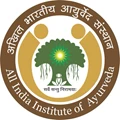
Researchers have found that Siddha drugs can effectively reduce anaemia among adolescent girls, which is a major breakthrough for traditional medicine. The findings, published in the Indian Journal of Traditional Knowledge (IJTK), aim to bring Siddha medicine into the mainstream for addressing anaemia, a widespread health issue across the country.
The research was conducted by experts from the National Institute of Siddha (NIS) under the Ministry of Ayush, in collaboration with Xavier Research Foundation and Velumailu Siddha Medical College & Hospital in Tamil Nadu. The study focused on a unique Siddha drug combination known as ABMN—comprising Aṉṉapēti centūram, Bāvaṉa kaṭukkāy, Mātuḷai maṇappāku, and Nellikkāy lēkiyam—which was found to improve haemoglobin levels and key blood health indicators such as Packed Cell Volume (PCV), Mean Corpuscular Volume (MCV), and Mean Corpuscular Hemoglobin (MCH).
The study involved 2,648 adolescent girls, out of which 2,300 participants successfully completed a 45-day treatment program. Before the treatment began, participants underwent deworming with Cuṇṭaivaṟṟal cūraṇam. They were then administered the ABMN Siddha combination under close observation for 45 days.
Clinical evaluations, including haemoglobin tests and other biochemical assessments, were conducted before and after the program. The researchers adhered to WHO guidelines, defining anaemia with a haemoglobin cut-off point of 11.9 mg/dl. Haemoglobin levels below 8.0 mg/dl were classified as severe anaemia, between 8.0 and 10.9 mg/dl as moderate, and between 11.0 and 11.9 mg/dl as mild.
A subset of 283 participants underwent further laboratory analysis for key indicators such as haemoglobin, PCV, MCV, MCH, red blood corpuscles (RBC), and white blood cells (WBC). The study found that the ABMN drug combination significantly reduced common anaemia symptoms like fatigue, headache, hair loss, and menstrual irregularities, while also improving the overall blood health of the participants.
Dr. R. Meenakumari, Director of the National Institute of Siddha and one of the study’s senior authors, highlighted the importance of these findings. “Siddha medicine plays a notable role in public health initiatives led by the Ministry of Ayush,” she said. “The awareness, dietary advice, and preventive care provided to adolescent girls, along with treatment through Siddha drugs, has shown clear therapeutic benefits. Siddha medicine offers cost-effective and accessible solutions for treating anaemia, and this study underscores its potential in improving public health.”
The study's promising results could pave the way for integrating Siddha medicine into broader healthcare strategies to combat anaemia, especially in resource-limited settings.
Link of the study:
















